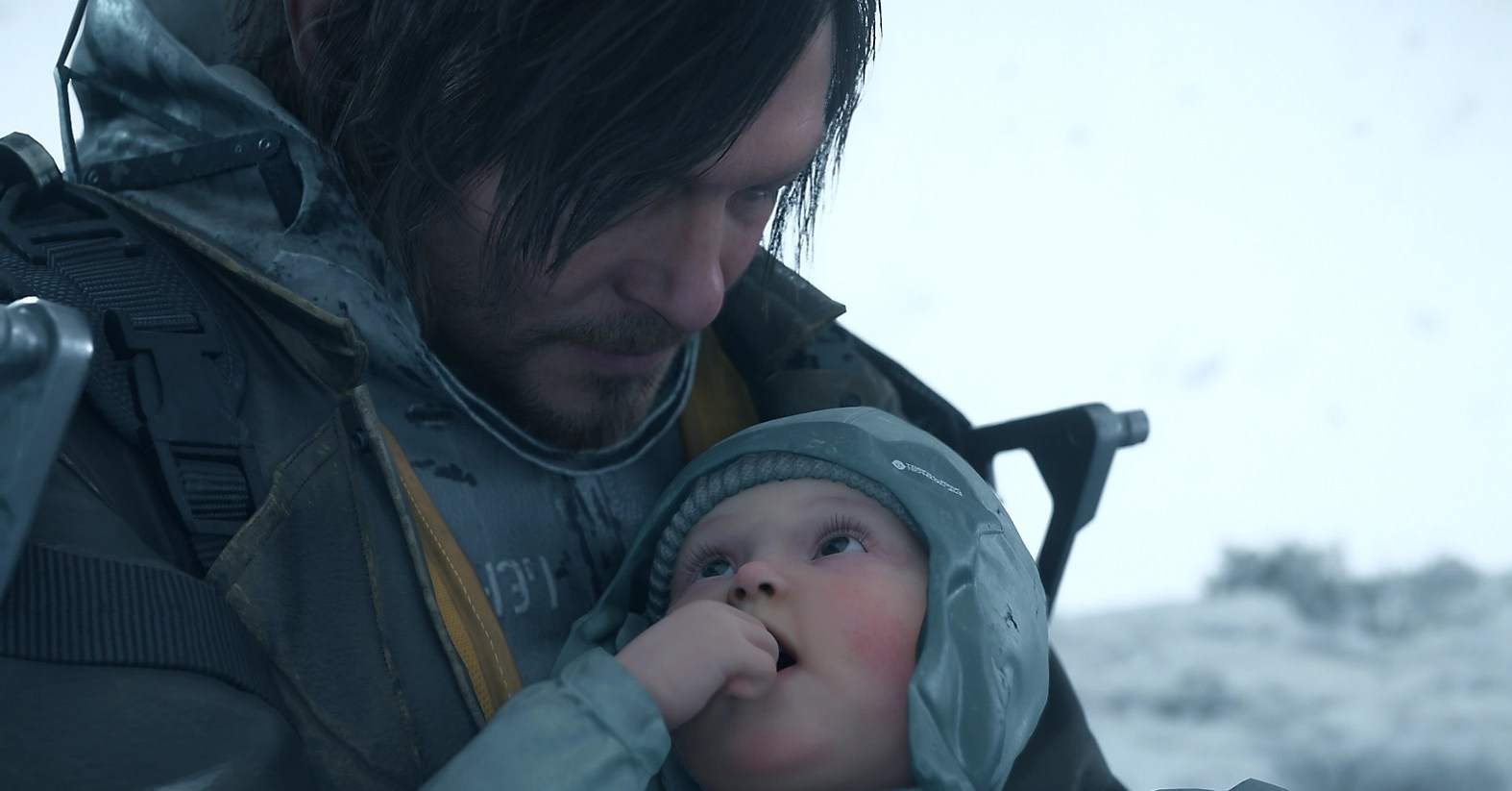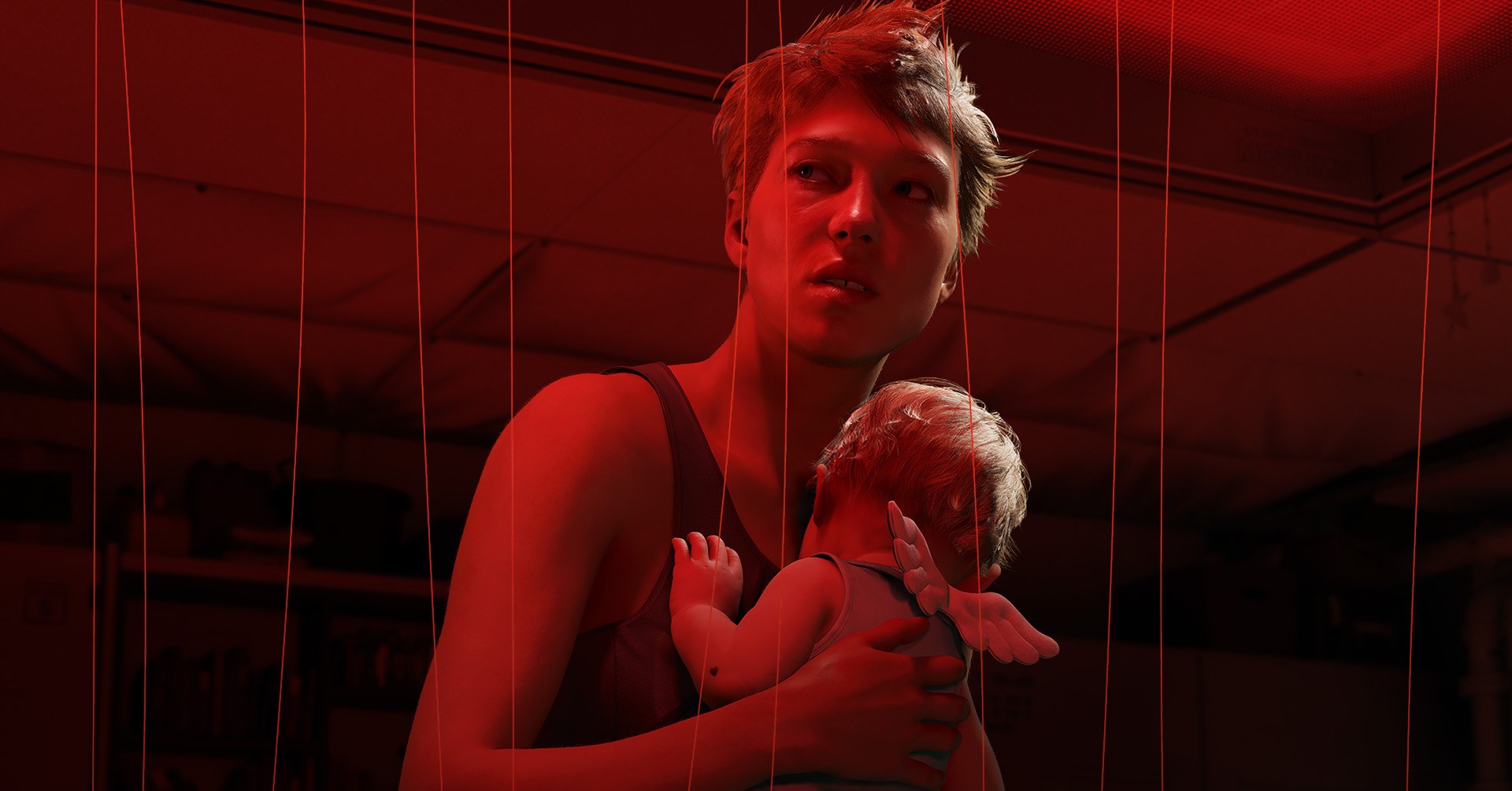The first Death Stranding came out in 2019, and I reviewed it then. It’s a long game, and I spent a couple of weeks sunk into its world. It was a strange experience for several reasons: primarily that it’s a very strange game, both frustrating and hypnotic, lucid and obtuse. It was also eerily prophetic about the isolation of the Covid-19 pandemic that was then just a few months in the future.
I had given myself the review as a little break from the day-to-day stresses of my job at the time. But reviewing a game this big and unwieldy comes with its own stresses — and then Hideo Kojima went and added an extra level of stress to it, in a way that felt like it had been tailored for me personally.
My daughter was just six months old at the time, so evening gaming sessions were accompanied by a baby monitor on the coffee table. As parents, my wife and I were still in a state of constant, anxious alertness, attuned to every rustle and whimper from the monitor’s tinny little speaker.
If you’ve played Death Stranding, you know where this is going. The game’s hero Sam Bridges carries a “BB” — an unborn baby in an odd little sarcophagus — on his chest that helps him perceive the world of the dead. If you fall foul of the game’s sinister “BT” ghosts — or even if you just fall over — the BB starts crying. And Kojima, in his playful cruelty, has the crying sound emanate from the PlayStation controller’s tinny little speaker.

It absolutely shredded our nerves. The sound, ringing out thinly from somewhere in the middle of the room, was uncannily similar to the baby monitor. Every time the BB started crying in the game — and it cried a lot — at least one of us would shoot a nervous glance at the monitor to look for the telltale flicker of its volume meter, heart sinking at the prospect of dragging our exhausted bodies off the sofa for another round of soothing. And then, when the cry proved virtual, I’d spend the next few minutes performing an in-game simulacrum of the same activity, gently rocking the controller to soothe my digital child. It was the exact opposite of relaxing. (Things got better when, far too late, I realized I could divert the sound to the TV speakers in the options.)
You don’t have to be a young parent to find the sound of a baby crying stressful. As a species, we’re hardwired to be alert to the distress of our young. A thousand horror movies depend on this primal response — and Kojima isn’t the first game creator to use it to needle players, either. Shigeru Miyamoto employed it to panicky effect in the 1995 masterpiece Yoshi’s Island, in which the Yoshis carry Baby Mario on their backs. When Mario gets knocked off, he floats away in a bubble, squalling, and Yoshi has a few seconds to scramble to pop the bubble and reclaim the child. It never fails to get the heart racing.
So I approached Death Stranding 2: On the Beach with a little dread, fearing the sonic torture Kojima had in store for me. But, to my surprise, it didn’t really materialize.

At first, I wondered if Sam’s BB — now named Lou — still cried through the controller speaker at all. (She does.) Then I wondered if the sound effect had been softened to be less harsh and intrusive. (Maybe?) Then I pondered that I hadn’t heard the crying as often. This was definitely true, but why? Was Lou programmed to get upset less easily? Was the game that much easier? Was I just better at it, trained by my long experience with the first game to tread more carefully over treacherous rocks and through fields of BTs? Or was the psychological impact of the crying different, coming from a named character with a clear parent-child relationship with the protagonist, rather than a slightly sinister and unknowable organic tool? Perhaps!
Either way, I was grateful that the developers at Kojima Productions had chosen to soften the most stressful element of the first game. But now that I write this down, I wonder if they even did. Because by far the biggest variable in this little psychological experiment is that my daughter is now six. She doesn’t wake up crying at all hours of the night. She doesn’t need us as much as she used to. She’s becoming her own person, no longer permanently attached to us by the umbilical stand-in of the baby monitor; no longer cradled in a metaphorical glass bubble in our arms, like the BB in the game.
So maybe Kojima’s trick just doesn’t work on me anymore. I can joke about mistaking the BB’s cries for my daughter’s now — it was just happenstance, a funny if disconcerting coincidence. Like any work of art, my response to Death Stranding was shaped subjectively by my specific experience at the time. (I imagine it has a different meaning for people who played it after, or during, the pandemic.)
But the work has to have a spark of recognizable humanity to connect on that level in the first place. And for all his bluster and pretension, that’s a connection Kojima has made time and time again through the strength of the imagery he cooks up with his artist collaborator Yoji Shinkawa, and through his mischievous insistence on breaking down the barrier between player and game. In 2019, I was playing Death Stranding to get away from my life. But through one sound effect coming out of a tinny little speaker, he put my life right back in my hands.
The post Death Stranding 2 dials back the most stressful thing about the first game appeared first on Polygon.




